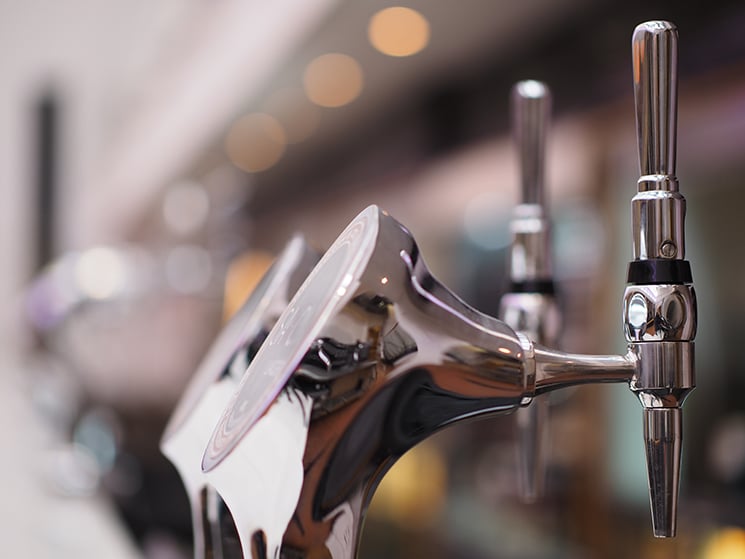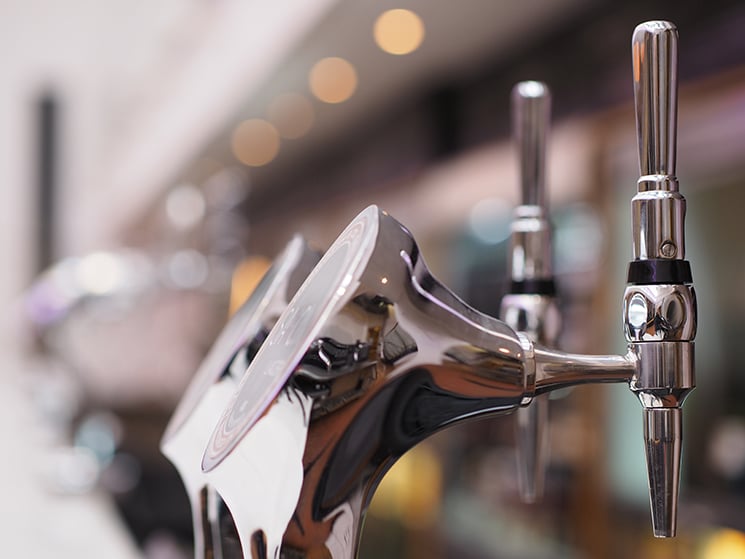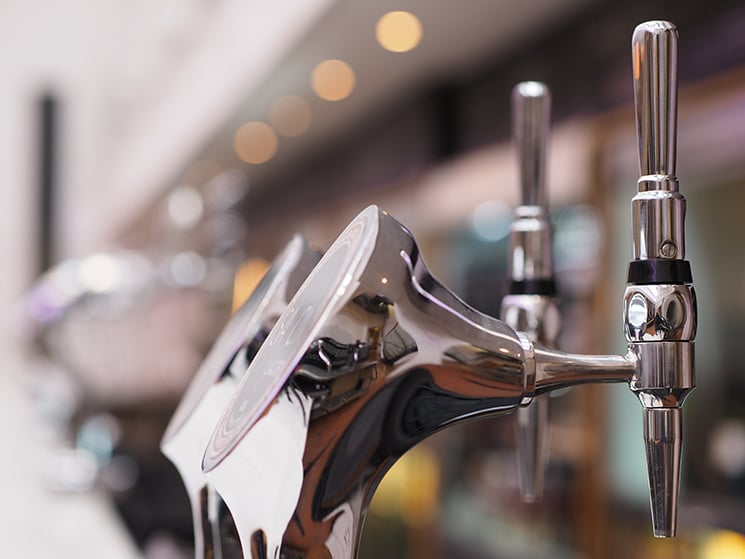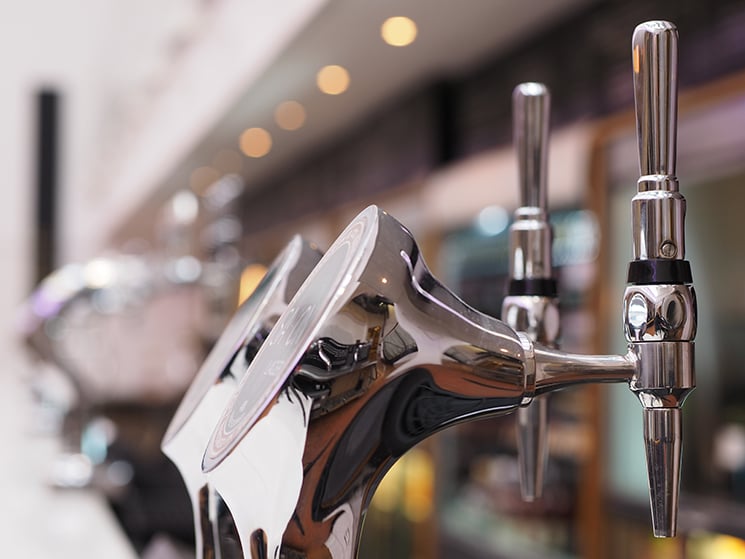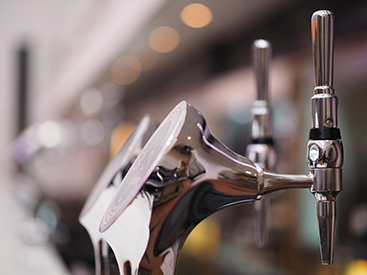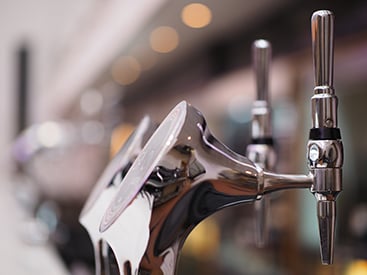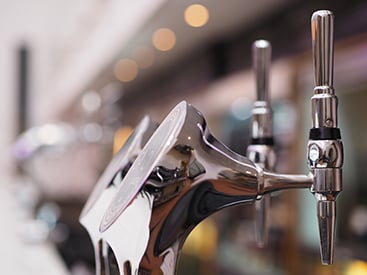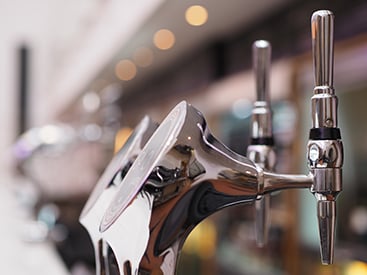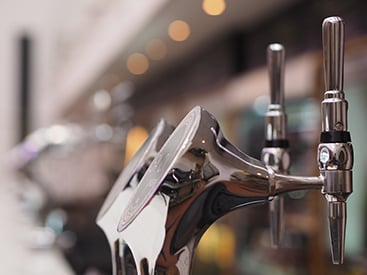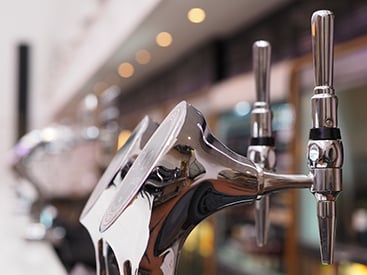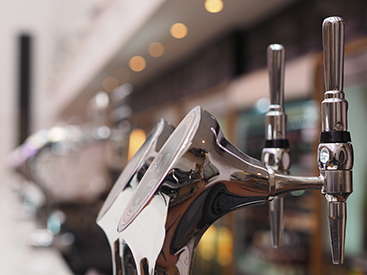Panasonic Leica 42.5mm f1.2 review
-
-
Written by Gordon Laing
Quality
Leica Nocticron 42.5mm f1.2 Bokeh
To evaluate the depth of field and bokeh of the Leica Nocticron 42.5mm f1.2 lens, I shot this interior scene at every aperture setting using an Olympus OMD EM1 mounted on a tripod.The EM1 was set to its base sensitivity of 200 ISO and the lens focused on the closest tap on the far right of the image. On this page I’ve simply presented the entire frame, reduced to fit the page, at a selection of the widest apertures.
On the previous pages we saw how sharp the Nocticron was across the entire frame even with its aperture wide open. It’s very impressive performance for a bright prime, but the major use for a lens like this is to throw the background out of focus, preferably with nicely rendered out-of-focus effects.
In the table below I’ve shown the full frame of a composition at f1.2, f1.4, f1.8, f2 and f2.8 for comparison. In the first crop with the aperture wide open at f1.2, the background has become nicely blurred with smooth rendering of out-of-focus effects that avoids the business of many cheaper lenses. Don’t get me wrong, this is not the creaminess I’ve seen from the Zeiss Otus, but equally the Nocticron is a lens that’s three times cheaper.
You will however notice that out-of-focus specular highlights are rendered as oval-shaped cats-eyes towards the edges when the aperture is wide open. As you close the aperture, these become more circular in shape, and by f1.8 they’re perfectly circular. I also can’t see any undesirable shapes or artefacts in the background.
While this page is all about the background, it’s also worth mentioning the foreground: the beer tap is pin-sharp on all the frames even at f1.2, despite being positioned close to the edge of the frame. This is something lesser lenses struggle with as you’ll see in my comparison on the next page.
But concluding here I’d say the Nocticron succeeds in delivering a very nice degree of separation between subject and background; it may ‘only’ be equivalent to 85mm f2.4 in terms of full-frame depth of field, but it remains one of the brightest lenses in the Micro Four Thirds catalogue.
There is of course one lens that’s brighter still: the Voigtlander 42.5mm f0.95. I haven’t had a chance to test this in person, although I have seen many reports on it. When wide open these reports show the Voigtlander also renders specular highlights as cats eyes, and while the depth of field is shallower, I personally feel the Nocticron has a tidier bokeh, and the focused areas are definitely sharper. I hope to make a full comparison in the near future. In the meantime though I was able to compare the Leica Nocticron against two very popular bright primes in the catalogue: the Olympus 45mm f1.8 and Olympus 75mm f1.8 and you can see how they all measure-up in my Nocticron Bokeh comparison. Alternatively, check out my Nocticron sample images!
Leica Nocticron 42.5mm f1.2 Bokeh (full image) |
Leica Nocticron 42.5mm f1.2 at f1.2 (full image) |
Leica Nocticron 42.5mm f1.2 at f1.4 (full image) |
Leica Nocticron 42.5mm f1.2 at f1.8 (full image) |
Leica Nocticron 42.5mm f1.2 at f2 |
Leica Nocticron 42.5mm f1.2 at f2.8 (full image) |
Leica Nocticron 42.5mm f1.2 vs Olympus 45mm f1.8
To compare the real-life performance of the Leica Nocticron 42.5mm f1.2 and Olympus 45mm f1.8 lenses, I shot this interior scene at every aperture setting using an Olympus OMD EM1 mounted on a tripod. When shooting with the slightly longer 45mm, the camera was positioned slightly further away to match the composition.The EM1 was set to its base sensitivity of 200 ISO and the lenses focused on the center of the composition using magnified Live View assistance. The corner and center crops shown below were taken from the areas marked with the red squares, right, and presented at 100%.
I shot the scene using the EM1’s RAW mode and processed the files in Adobe Camera RAW (ACR) via Photoshop using the following sharpening settings: 50 / 0.5 / 36 / 10. All lens corrections were disabled, so there’s no software compensation for vignetting, geometric distortion or chromatic aberrations, although note the camera may be applying some corrections before the RAW file is recorded which can’t be disabled.
In the first table below you’ll see how the two lenses compare in the middle of the frame, and in the second table you’ll see how they compare in the corner. The Olympus 45mm f1.8 can’t match the maximum aperture of the Nocticron, but it’s revealing to compare their sharpness at their respective maximum apertures – so both tables open with the Nocticron at f1.2 and the Olympus 45mm at f1.8. Looking at the center crop first, it’s clear the Nocticron is delivering a comfortably crisper image at f1.2 than the Olympus 45mm is at f1.8, but just take a look at the corner crops to see a bigger difference: as we previously saw, the Nocticron is respectably sharp in the corners at f1.2, but the Olympus 45mm f1.8 is noticeably softer at its maximum aperture. This is impressive performance from the Nocticron which not only out-performs the Olympus 45mm at their maximum apertures, but while also gathering a full stop more light.
Moving through the crops, I’d say the Olympus 45mm needs to be closed to f4-5.6 before it attains maximum sharpness, but even then it lacks the ultimate bite, detail and contrast of the Nocticron, even when the Nocticron is using much larger apertures. The bottom line is the Nocticron is a sharper lens throughout the aperture range and across the frame, but especially at larger apertures.
Personally speaking this is a very interesting result as the Olympus 45mm f1.8 has long been a favourite lens of mine: I’d use it wide open for shallow depth of field effects or close it down to f4 for crisp architectural and landscape shots. I was very happy with it – and still am – but I did wonder how much the Nocticron could improve on it. Well the answer is below and clear to see: the Olympus 45mm performs brilliantly for its size and price, but it can’t compete with the Nocticron on sharpness, again especially at larger apertures.
But I often feel I’m in the minority when I enthuse about sharpness across the frame, when what most people want from a large aperture prime is the ability to throw the background out of focus with nice rendering. If you’ve seen enough tests, have a look at my Nocticron sample images.
Leica Nocticron 42.5mm f1.2 center sharpness | Olympus 45mm f1.8 center sharpness | |
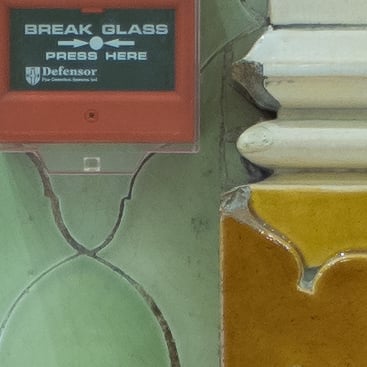 | 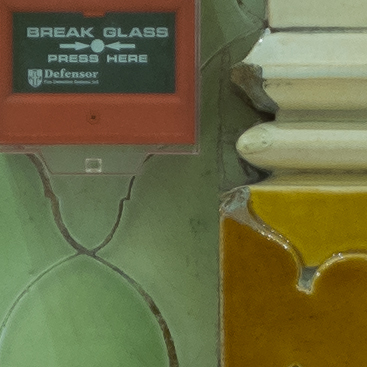 | |
Leica Nocticron 42.5mm f1.2 center crop at f1.2 | Olympus 45mm f1.8 center crop at f1.8 | |
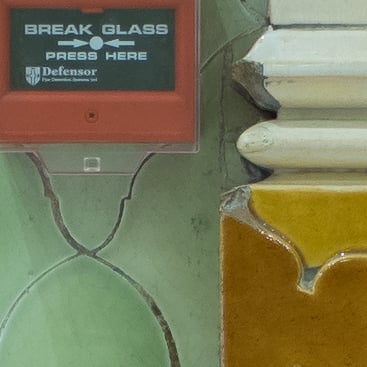 | ||
Leica Nocticron 42.5mm f1.2 center crop at f1.4 | Olympus 45mm f1.8 center crop at f1.4: n/a | |
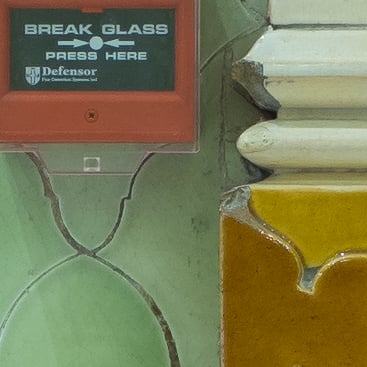 |  | |
Leica Nocticron 42.5mm f1.2 center crop at f1.8 | Olympus 45mm f1.8 center crop at f1.8 | |
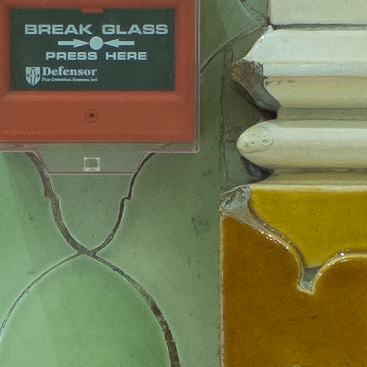 | 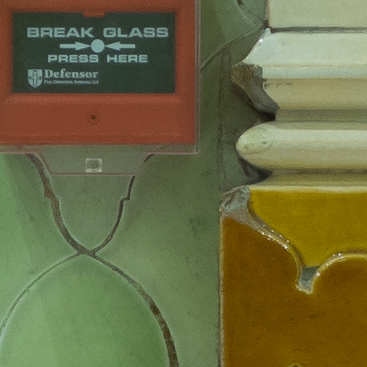 | |
Leica Nocticron 42.5mm f1.2 center crop at f2 | Olympus 45mm f1.8 center crop at f2 | |
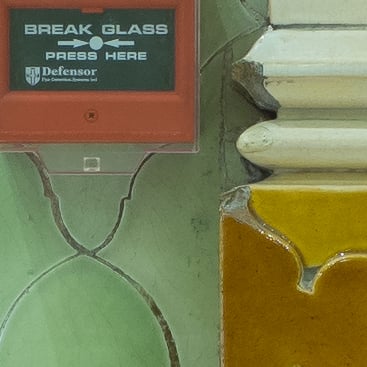 | 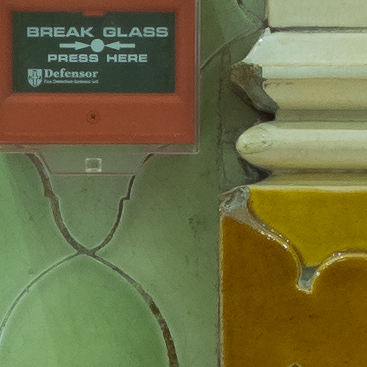 | |
Leica Nocticron 42.5mm f1.2 center crop at f2.8 | Olympus 45mm f1.8 center crop at f2.8 | |
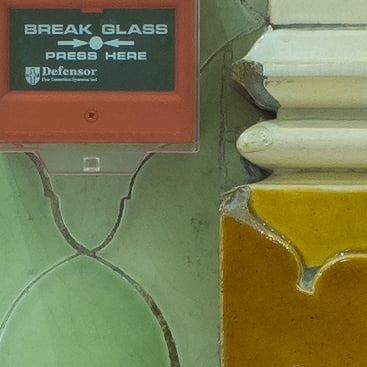 | 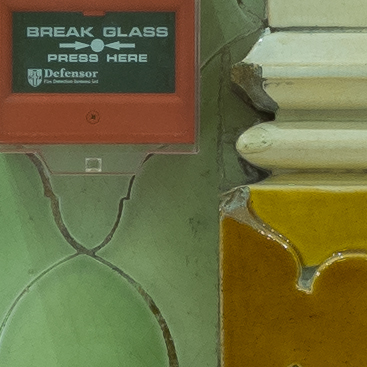 | |
Leica Nocticron 42.5mm f1.2 center crop at f4 | Olympus 45mm f1.8 center crop at f4 | |
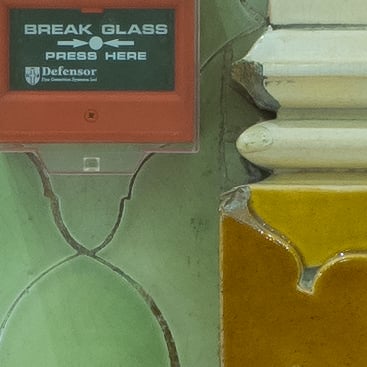 | 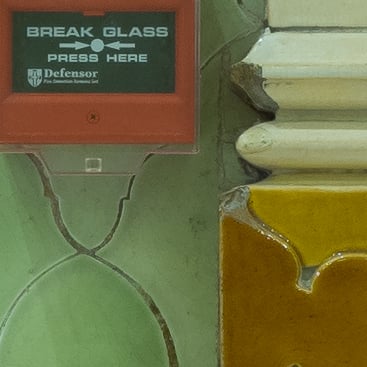 | |
Leica Nocticron 42.5mm f1.2 center crop at f5.6 | Olympus 45mm f1.8 center crop at f5.6 | |
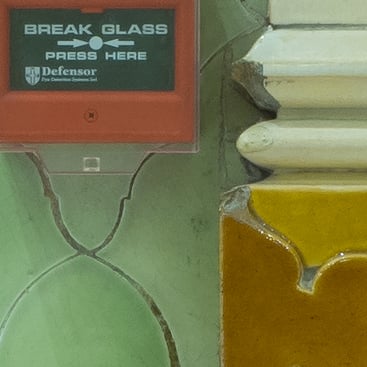 | 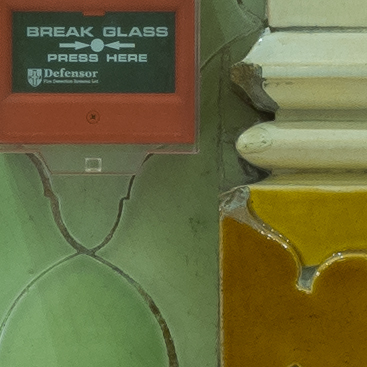 | |
Leica Nocticron 42.5mm f1.2 center crop at f8 | Olympus 45mm f1.8 center crop at f8 | |
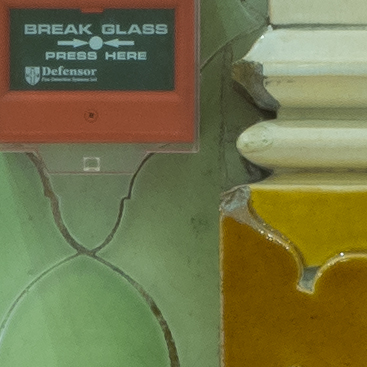 | 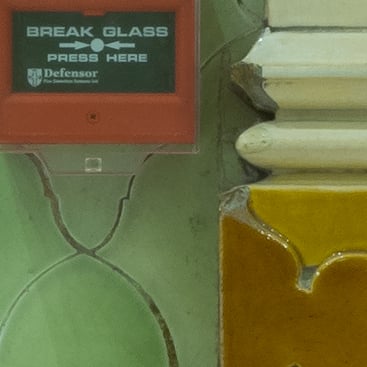 | |
Leica Nocticron 42.5mm f1.2 center crop at f11 | Olympus 45mm f1.8 center crop at f11 | |
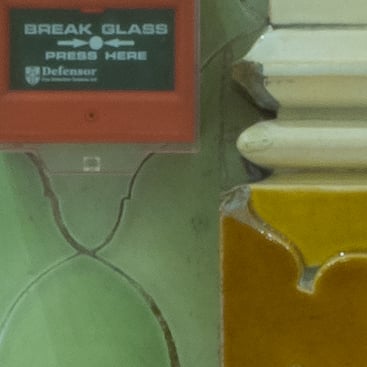 | 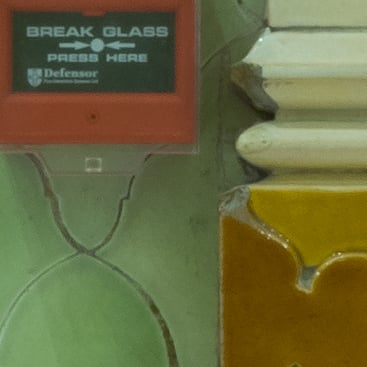 | |
Leica Nocticron 42.5mm f1.2 center crop at f16 | Olympus 45mm f1.8 center crop at f16 |
Leica Nocticron 42.5mm f1.2 vs Olympus 45mm f1.8 corner sharpness
Leica Nocticron 42.5mm f1.2 corner sharpness | Olympus 45mm f1.8 corner sharpness | |
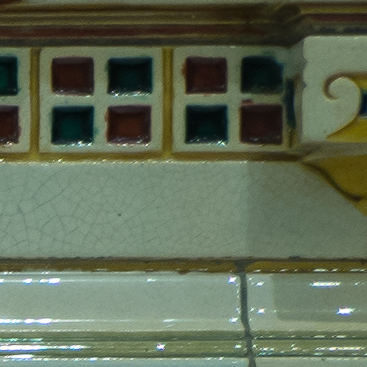 | 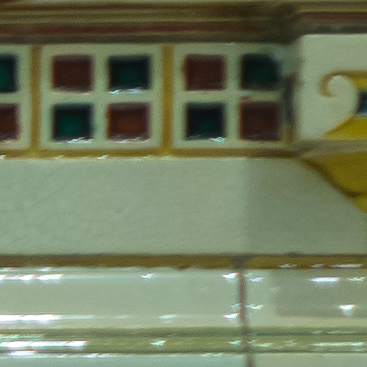 | |
Leica Nocticron 42.5mm f1.2 corner crop at f1.2 | Olympus 45mm f1.8 corner crop at f1.8 | |
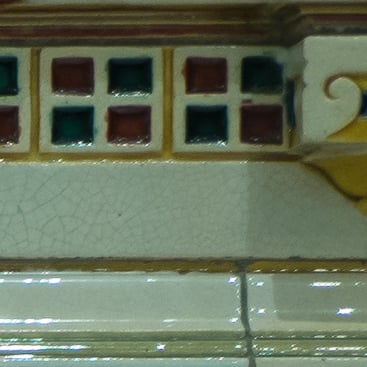 | ||
Leica Nocticron 42.5mm f1.2 corner crop at f1.4 | Olympus 45mm f1.8 corner crop at f1.4: n/a | |
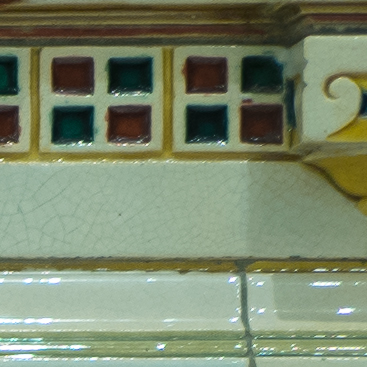 |  | |
Leica Nocticron 42.5mm f1.2 corner crop at f1.8 | Olympus 45mm f1.8 corner crop at f1.8 | |
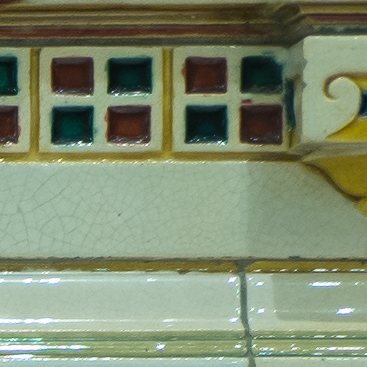 | 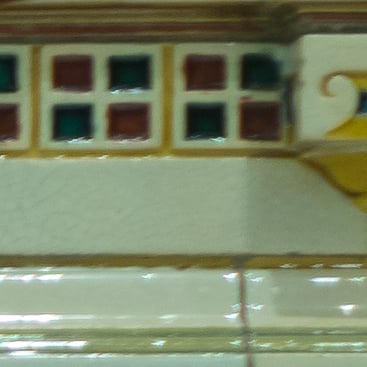 | |
Leica Nocticron 42.5mm f1.2 corner crop at f2 | Olympus 45mm f1.8 corner crop at f2 | |
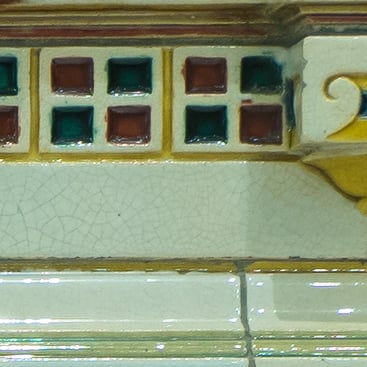 | 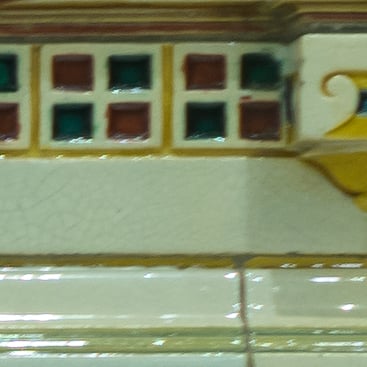 | |
Leica Nocticron 42.5mm f1.2 corner crop at f2.8 | Olympus 45mm f1.8 corner crop at f2.8 | |
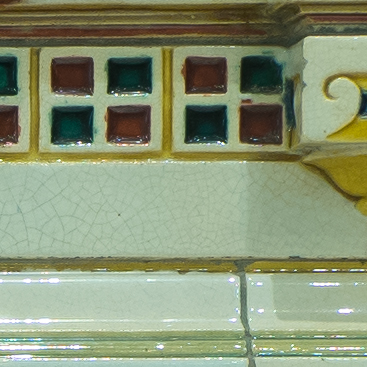 | 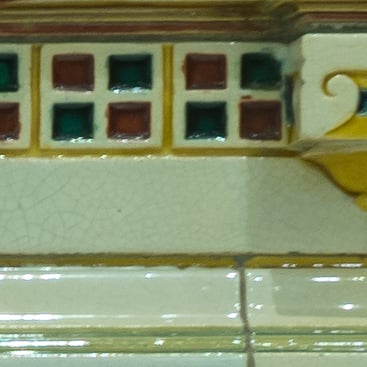 | |
Leica Nocticron 42.5mm f1.2 corner crop at f4 | Olympus 45mm f1.8 corner crop at f4 | |
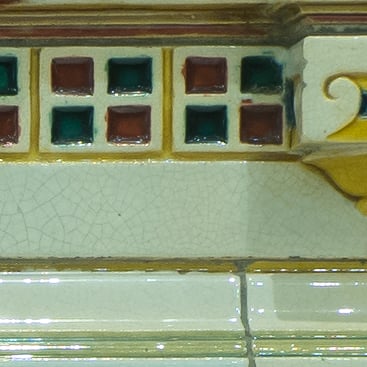 | 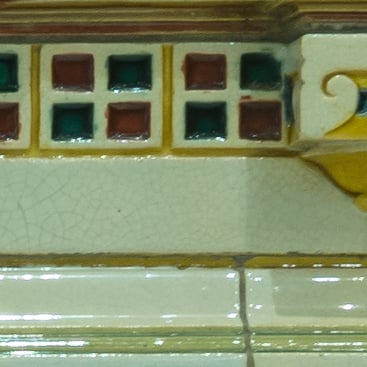 | |
Leica Nocticron 42.5mm f1.2 corner crop at f5.6 | Olympus 45mm f1.8 corner crop at f5.6 | |
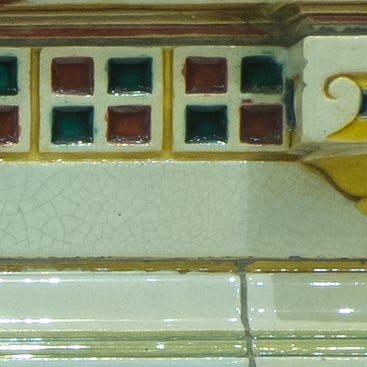 | 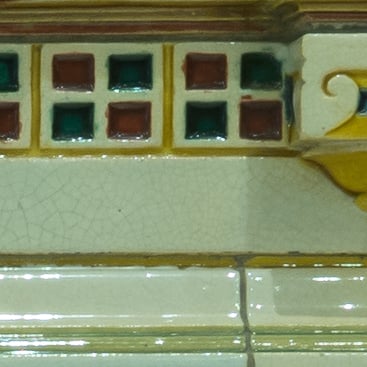 | |
Leica Nocticron 42.5mm f1.2 corner crop at f8 | Olympus 45mm f1.8 corner crop at f8 | |
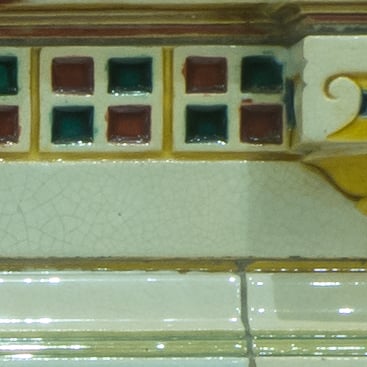 | 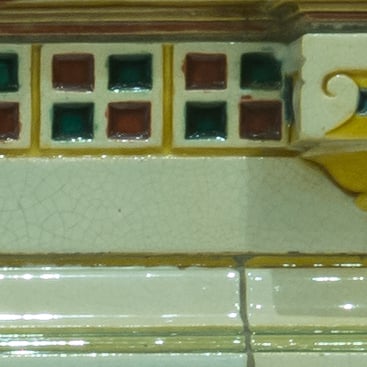 | |
Leica Nocticron 42.5mm f1.2 corner crop at f11 | Olympus 45mm f1.8 corner crop at f11 | |
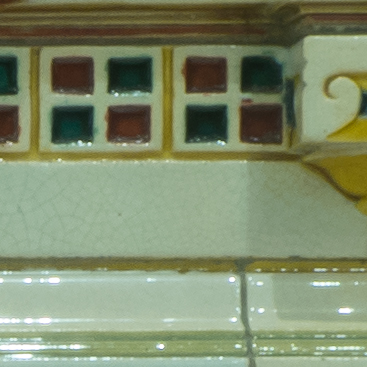 | 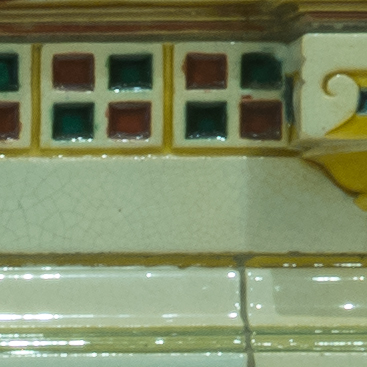 | |
Leica Nocticron 42.5mm f1.2 corner crop at f16 | Olympus 45mm f1.8 corner crop at f16 |
Leica Nocticron 42.5mm f1.2 Bokeh comparison
Leica Nocticron 42.5mm f1.2 bokeh | Olympus 45mm f1.8 bokeh | |
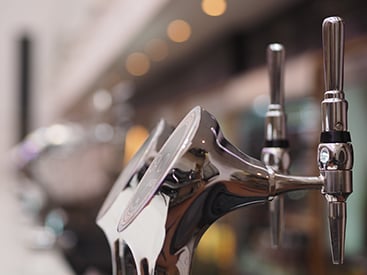 | ||
Leica Nocticron 42.5mm f1.2 at f1.2 (full image) | Olympus 45mm f1.8 at f1.8 (full image) | |
Leica Nocticron 42.5mm f1.2 at f1.4 (full image) | Olympus 45mm f1.8 at f1.4: n/a | |
Leica Nocticron 42.5mm f1.2 at f1.8 (full image) | Olympus 45mm f1.8 at f1.8 (full image) | |
Leica Nocticron 42.5mm f1.2 at f2 (full image) | Olympus 45mm f1.8 at f2 (full image) | |
Leica Nocticron 42.5mm f1.2 at f2.8 (full image) | Olympus 45mm f1.8 at f2.8 (full image) | |
Nocticron vs Olympus 45mm and Olympus 75mmAnother lens many photographers will be wanting to compare is the Olympus 75mm f1.8. In terms of build and optical sharpness, this is a much closer match to the Nocticron, although it’s actually smaller and about half the price. Below I’ve presented the bar composition with all three lenses at their maximum apertures, f1.2 on the Nocticron and f1.8 for the two Olympus models. I started with the Nocticron and gradually moved further away to maintain the composition with the longer focal length alternatives from Olympus. 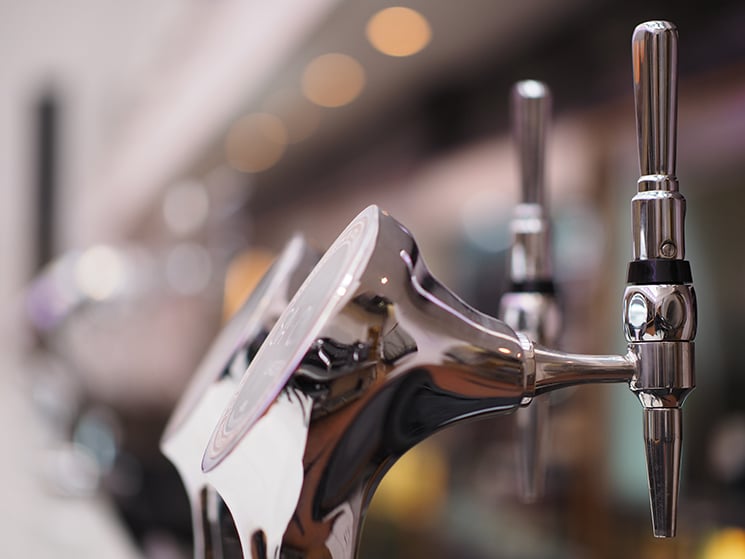 You’ve already seen how the Nocticron compares against the Olympus 45mm f1.8 at their maximum respective apertures: the Nocticron delivers a shallower depth of field with tidier bokeh, albeit with specular highlights rendered as cats eyes rather than circles. As for the Olympus 75mm f1.8, its longer focal length delivers a noticeably shallower depth of field than the other pair, while also enlarging the elements in the background for better or worse. The perspective is also flattened, the highlights are mostly circular, and it’s worth noting the subject is as sharp as the Nocticron when viewed at 100%. Looking at the entire frame, most would probably prefer the view from the Olympus 75mm f1.8, but it’s important to note it’s taken from almost double the distance which may not be convenient, nor practical for portraits. Scroll down further for some more comparisons between the three! |
Leica Nocticron 42.5mm f1.2 vs Olympus 45mm f1.8 vs Olympus 75mm f1.8 Bokeh at maximum apertures (distances adjusted to match composition) |
Leica Nocticron 42.5mm f1.2 at f1.2 (full image) |
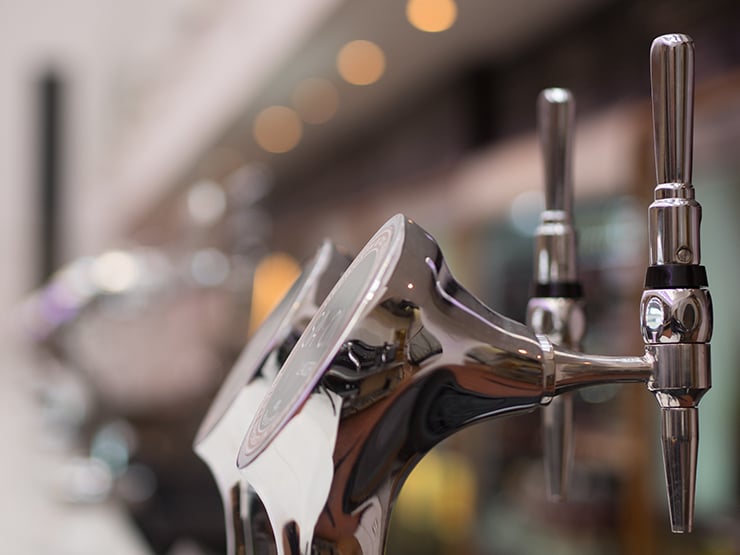 |
Olympus 45mm f1.8 at f1.8 (full image) |
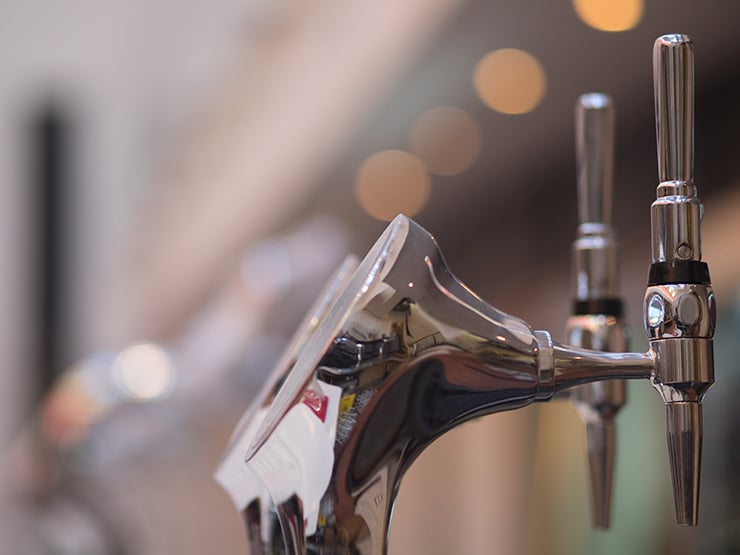 |
Olympus 75mm f1.8 at f1.8 (full image) |
| Below I’ve made some more comparisons between the three lenses, again all at their maximum respective apertures. Below the full-frame images are two sets of crops, taken from a 25% view. I’d say all three do a good job on the specular highlights, although again if you want to shoot the Nocticron at f1.2 you’ll need to accept cats eyes. Moving onto the beer taps, I’d say the Nocticron delivers the best-looking result with a pin-sharp tap in the foreground and the nicest blur on the second tap. |
The 45mm f1.8 rendering is a little busy with a softer main subject too, and while the 75mm has a sharp subject and obliterated the distant background with its shallow depth of field, the second tap is actually better defined than on the Nocticron. So if you want to isolate subjects that are close together the Nocticron will do a better job, but if the background is further behind your subject, then the 75mm easily wins on blurring it. I should also note the 75mm matches the Nocticron in sharpness across the frame in my tests so far, delivering very respectable results even when wide open.
Overall these results confirm what you’d expect: the Olympus 45mm f1.8, while a fantastic performer for the size and money, can’t compete with the Nocticron on sharpness across the frame, especially at larger apertures, and can’t match the bokeh either when both are at their maximum apertures. Meanwhile the Olympus 75mm can match the Nocticron on sharpness across the frame while also delivering a shallower depth of field, although in some compositions such as the one above, the Nocticron still manages to deliver more preferable blurring on subjects near the one in focus.
Considering the Olympus 75mm costs roughly half that of the Nocticron and shares its build quality, it’s looking like a relative bargain, but remember to take the focal length into careful condieration: with a 150mm equivalent compared to 85mm, you need to be much further from the subject when shooting with the Olympus 75mm which may not be practical especially when engaging with a person for a portrait. The Nocticron’s focal length, while still a short telephoto, remains more practical for portrait and day to day use, but you’re paying for its large aperture and sharp performance.
For lots more examples of the Nocticron in practice, check out my Nocticron sample images!
BOKEH COMPARISON TO FOLLOW
To compare the depth of field and bokeh of the Leica Nocticron 42.5mm f1.2 against the Olympus 45mm f1.8 and Olympus 75mm f1.8, I shot this interior scene at every aperture setting using an Olympus OMD EM1 mounted on a tripod.
In each case the camera’s position was adjusted to maintain the composition at the different focal lengths. Note: when testing the 75mm the background had changed slightly.
The EM1 was set to its base sensitivity of 200 ISO and the lens focused on the closest tap on the far right of the image. On this page I’m presenting a variety of views and crops to help you evaluate their performance.
I’ll start with a sequence showing full-frame images from the Nocticron against the Olympus 45mm f1.8 at a selection of their larger apertures; this gives an overview of how their overall depth of field compares. At the top of the table you’ll see both lenses at their maximum respective apertures, and it’s clear how the Nocticron even at this reduced size is delivering a noticeably shallower depth of field – the background is less defined and distracting on the Nocticron and the bokeh less busy, and beyond that the focused subject is also much sharper. That said, if you shoot the Nocticron at f1.2, you’ll need to accept specular highlights rendered into cats-eyes rather than the circles of the Olympus 45mm at f1.8.
Close the Nocticron to f1.8 and it too renders specular highlights as circles, and the overall rendering style, the bokeh, looks very similar between them. Sometimes premium lenses deliver better-looking rendering at the same aperture values, but in this example I’d say the Nocticron and the Olympus 45mm are pretty well matched, and this continues at f2 and f2.8. Some of the highlights look a little nicer on the Nocticron at f1.8, but it’s really very close. You can download the originals from Flickr by clicking the images below. Please also scroll down further for more bokeh comparisons, which include the Olympus 75mm f1.8!
Leica Nocticron 42.5mm f1.2 coma
To evaluate the real-life coma of the Leica Nocticron 42.5mm f1.2 lens, I shot this night scene at every aperture setting using an Olympus OMD EM1 mounted on a tripod.The EM1 was set to its base sensitivity of 200 ISO and the lens focused on the center of the composition using magnified Live View assistance. The corner and center crops shown below were taken from the areas marked with the red squares, right, and presented at 100%.
Coma is often an issue for large aperture lenses, where point sources of light can be rendered as undesirable shapes, especially in the corners. In a less than perfect optical system, coma can turn point sources into wedges or even strange wing-shapes. The issue particularly affects astro-photographers or anyone shooting city views at night. Admittedly the latter can normally stop-down their lenses to minimize aberrations, but for astro-photography, light gathering power is King, and besides if you’re buying a large aperture lens it’s important to know how well it performs when wide open.
Additionally when closing the aperture, another optical effect kicks-in which renders point sources as starbursts as the system gradually approaches diffraction. While technically an aberration, it’s an effect which many city night photographers desire, so my test performs double-duty by indicating where coma ends and where the starburst looks best.
I shot this night view of London from The South Bank at every aperture and have presented 100% crops from the extreme corner and center of the image, as indicated by the red frames above. The center crops are more to indicate the relative performance in the middle and reveal where the lens is at its sharpest or suffering from diffraction. The really important crop is the corner one, concentrating on the bright lights shining directly into the lens.
With the aperture fully-opened at f1.2, there’s some visible coma in the far corners, but believe me, this is minimal – remember you’re looking at a 100% crop here from the extreme corner and it doesn’t look that bad at all. Additionally the purple colour can be effectively reduced using Chromatic Aberration correction in RAW converters like Adobe Camera RAW. I’m pleased to say the Nocticron also did not suffer from the flare issues of the Lumix 7-14mm, so there’s no purple blobs elsewhere on the image to worry about.
Close the aperture to f2 and the coma shape and colour just about disappear in the far corners and the starburst effect starts to take shape. Personally speaking, I’d say the starburst looks best between f2.8 and f4, although you will need to look closely for it when viewing the whole image. Close the aperture to f5.6 and beyond and the star spokes become longer and better-defined, but equally some less desirable effects of diffraction creep in. I’d say f8 is as far as you should take it, as f11 and f16 look messy and diffraction is also softening the overall image, as apparent from the center crop.
So from this test I’d say the Nocticron impressively keeps coma at a minimum, and even with point sources in the far corners, it’s not bad at all. This is great news if you’d like to exploit the maximum aperture for handheld shooting under dim conditions, although if you can accommodate a small aperture, I’d say it’s worth closing it to f2.8-4 for a nice-looking starburst effect. I’ve included the f4 version in my sample images gallery, along with one which shows a handheld night shot at f1.2 which I reckon looks pretty good.
With my optical tests complete you can check out more real-life examples in my Nocticron sample images, or skip to my verdict!
Leica Nocticron 42.5mm f1.2 corner coma | Leica Nocticron 42.5mm f1.2 center coma | |
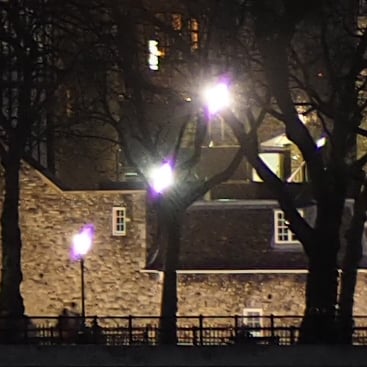 | 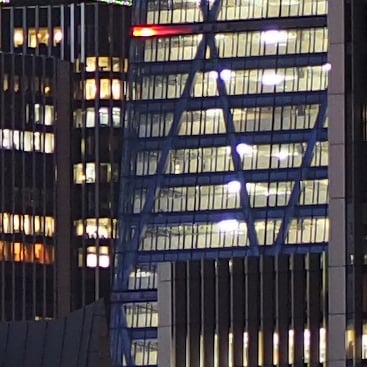 | |
Leica Nocticron 42.5mm f1.2 corner crop at f1.2 | Leica Nocticron 42.5mm f1.2 center crop at f1.2 | |
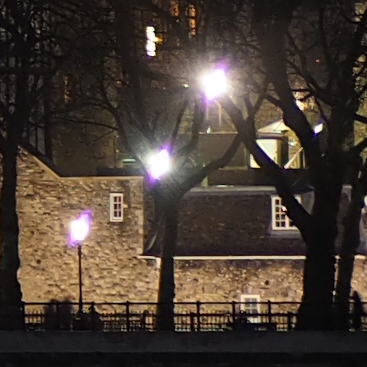 | 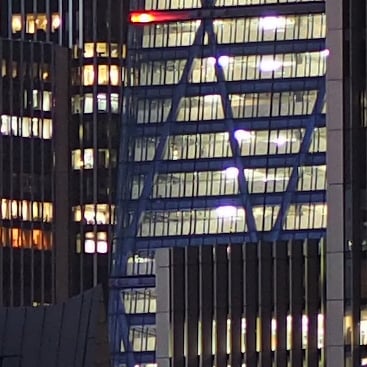 | |
Leica Nocticron 42.5mm f1.2 corner crop at f1.4 | Leica Nocticron 42.5mm f1.2 center crop at f1.4 | |
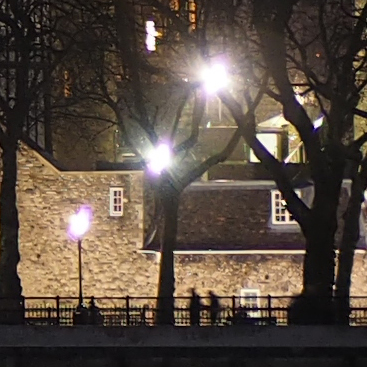 | 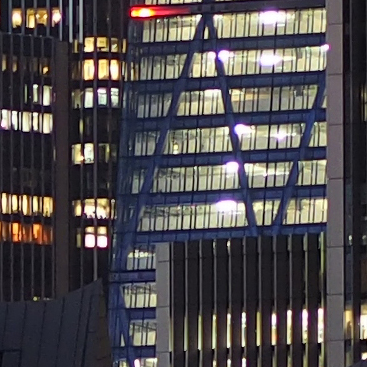 | |
Leica Nocticron 42.5mm f1.2 corner crop at f1.8 | Leica Nocticron 42.5mm f1.2 center crop at f1.8 | |
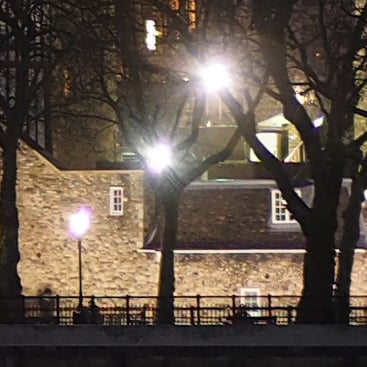 | 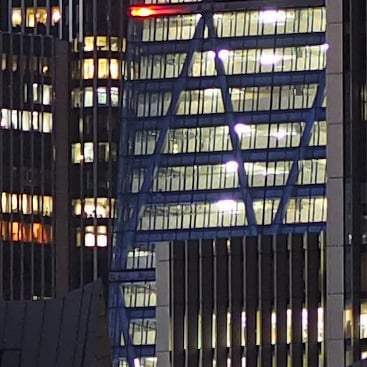 | |
Leica Nocticron 42.5mm f1.2 corner crop at f2 | Leica Nocticron 42.5mm f1.2 center crop at f2 | |
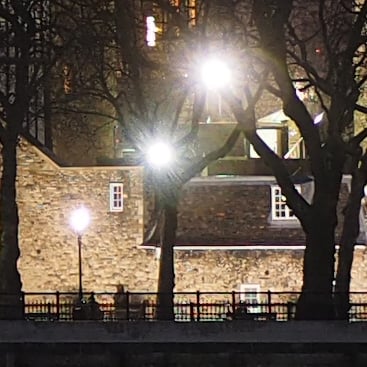 | 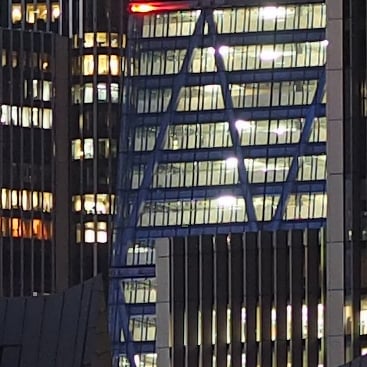 | |
Leica Nocticron 42.5mm f1.2 corner crop at f2.8 | Leica Nocticron 42.5mm f1.2 center crop at f2.8 | |
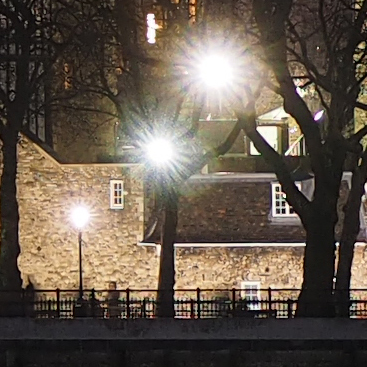 | 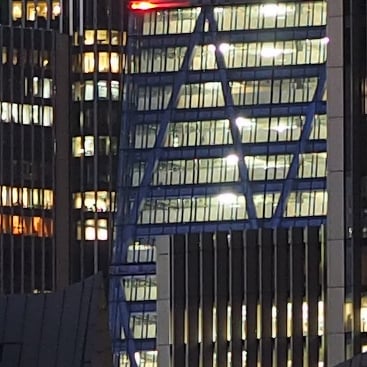 | |
Leica Nocticron 42.5mm f1.2 corner crop at f4 | Leica Nocticron 42.5mm f1.2 center crop at f4 | |
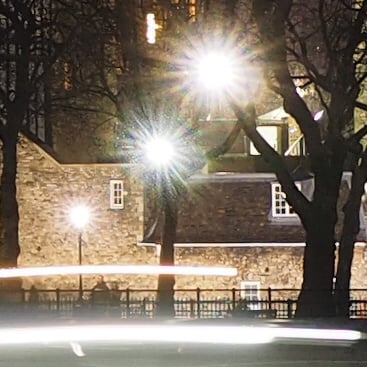 | 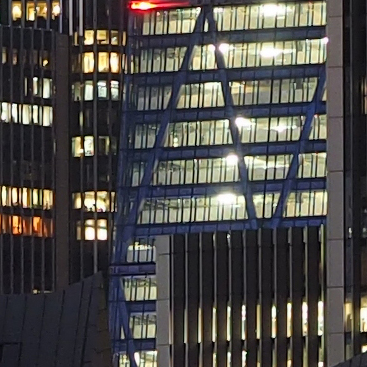 | |
Leica Nocticron 42.5mm f1.2 corner crop at f5.6 | Leica Nocticron 42.5mm f1.2 center crop at f5.6 | |
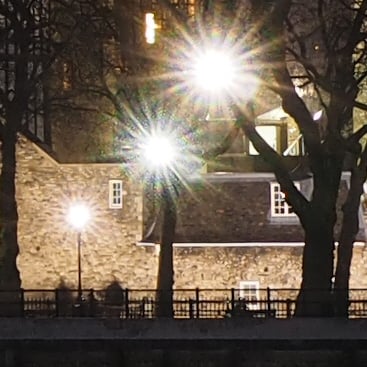 | 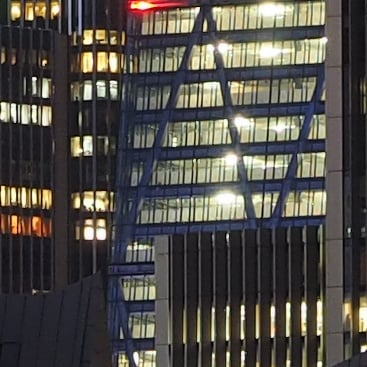 | |
Leica Nocticron 42.5mm f1.2 corner crop at f8 | Leica Nocticron 42.5mm f1.2 center crop at f8 | |
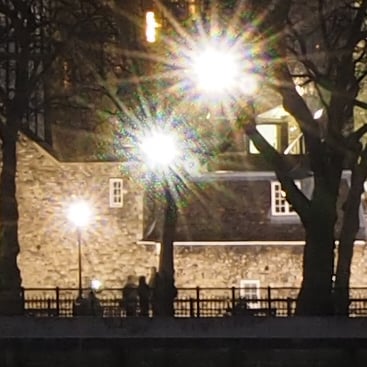 | 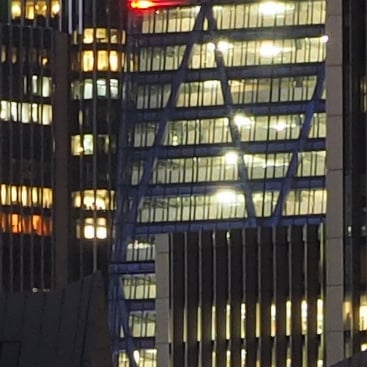 | |
Leica Nocticron 42.5mm f1.2 corner crop at f11 | Leica Nocticron 42.5mm f1.2 center crop at f11 | |
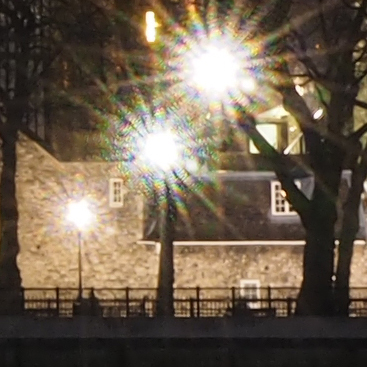 | 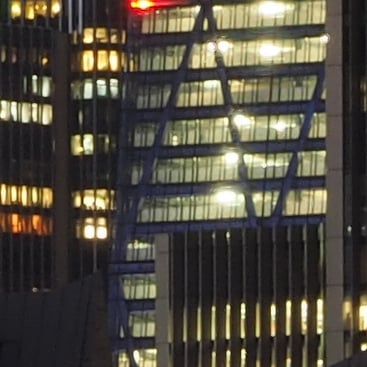 | |
Leica Nocticron 42.5mm f1.2 corner crop at f16 | Leica Nocticron 42.5mm f1.2 center crop at f16 |
Leica Nocticron 42.5mm f1.2 quality
To evaluate the real-life performance of the Leica Nocticron 42.5mm f1.2 lens, I shot this interior scene at every aperture setting using an Olympus OMD EM1 mounted on a tripod.The EM1 was set to its base sensitivity of 200 ISO and the lens focused on the center of the composition using magnified Live View assistance. The corner and center crops shown below were taken from the areas marked with the red squares, right, and presented at 100%.
I shot the scene using the EM1’s RAW mode and processed the files in Adobe Camera RAW (ACR) via Photoshop using the following sharpening settings: 50 / 0.5 / 36 / 10. All lens corrections were disabled, so there’s no software compensation for vignetting, geometric distortion or chromatic aberrations, although note the camera may be applying some corrections before the RAW file is recorded which can’t be disabled.
Looking at the crops below, the first thing that strikes you is how sharp the Nocticron is across the entire frame even at its maximum aperture. Normally we’re used to seeing lenses, especially bright primes, start off looking soft, particularly in the corners. As the aperture is closed, these corners gradually become sharper and the contrast peaks at a sweetspot. But with the Nocticron it starts off looking great at f1.2, delivering very crisp details without any aberrations to mention. The revelation for me is the crop from the far corner of the image at f1.2 which looks much better than you’d expect, and suggests this is a lens with an imaging circle corrected for a much larger format.
This is a lens I’d be very happy using at its maximum aperture, confident in its ability to capture fine details across the frame, not just in the middle as you’d normally expect for a bright aperture prime. That said, there are small benefits to closing the aperture. You’ll notice the pinpoints of reflected light gradually become more focused and circular with a peak at around f4. Looking at the file sizes, contrast and overall sharpness, I’d say this was the sweetspot of the lens and if a shallow depth of field or maximum light gathering weren’t critical, this would be the aperture I’d probably aim for. But unlike most lenses, the difference between f4 and the maximum aperture is minimal for contrast and sharpness across the frame. I assumed the Nocticron would be all about achieving the shallowest depth of field with attractive bokeh effects, but this sequence proves it’s also one of the sharpest tools in the box.
Leica Nocticron 42.5mm f1.2 corner sharpness | Leica Nocticron 42.5mm f1.2 center sharpness | |
 |  | |
Leica Nocticron 42.5mm f1.2 corner crop at f1.2 | Leica Nocticron 42.5mm f1.2 center crop at f1.2 | |
 |  | |
Leica Nocticron 42.5mm f1.2 corner crop at f1.4 | Leica Nocticron 42.5mm f1.2 center crop at f1.4 | |
 |  | |
Leica Nocticron 42.5mm f1.2 corner crop at f1.8 | Leica Nocticron 42.5mm f1.2 center crop at f1.8 | |
 |  | |
Leica Nocticron 42.5mm f1.2 corner crop at f2 | Leica Nocticron 42.5mm f1.2 center crop at f2 | |
 |  | |
Leica Nocticron 42.5mm f1.2 corner crop at f2.8 | Leica Nocticron 42.5mm f1.2 center crop at f2.8 | |
 |  | |
Leica Nocticron 42.5mm f1.2 corner crop at f4 | Leica Nocticron 42.5mm f1.2 center crop at f4 | |
 |  | |
Leica Nocticron 42.5mm f1.2 corner crop at f5.6 | Leica Nocticron 42.5mm f1.2 center crop at f5.6 | |
 |  | |
Leica Nocticron 42.5mm f1.2 corner crop at f8 | Leica Nocticron 42.5mm f1.2 center crop at f8 | |
 |  | |
Leica Nocticron 42.5mm f1.2 corner crop at f11 | Leica Nocticron 42.5mm f1.2 center crop at f11 | |
 |  | |
Leica Nocticron 42.5mm f1.2 corner crop at f16 | Leica Nocticron 42.5mm f1.2 center crop at f16 |
